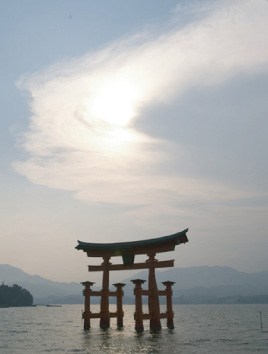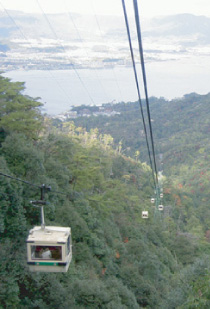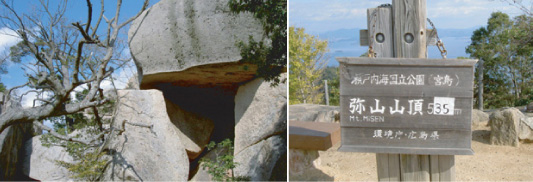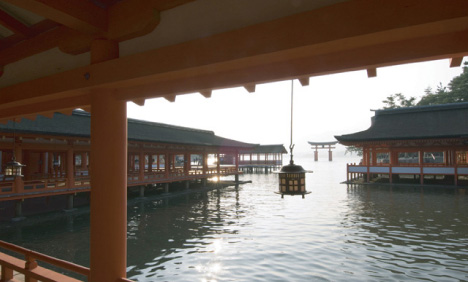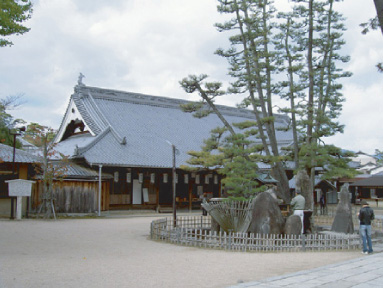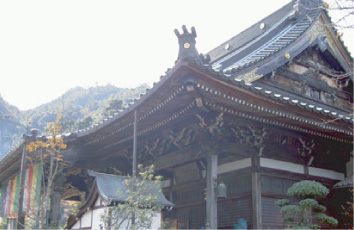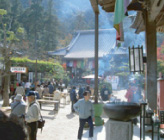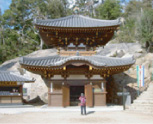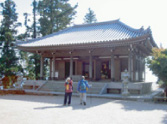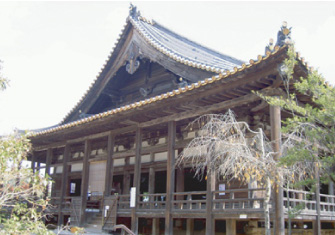 |
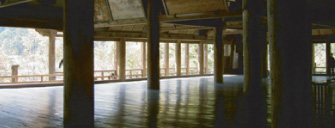 |
| Senjokaku |
Toyotomi Hideyoshi built this large prayer hall in commemoration of fallen soldiers.
It is also known as Hokoku Shrine and is registered as an important national treasure. Due to its size, it is more commonly known as Senjokaku or gHall of One-thousand Tatami Mats.h
After Hideyoshifs death construction stopped, so the hall remains unfinished, and to this day one can view the extravagant open construction of the beams in the ceiling.
It is said that the actual size of the hall is 857 tatami mats. |
|
|
|
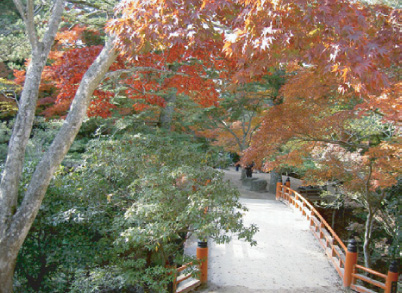
| Momijidani Park |
This park affords exceptional views at the base of the mountain adjacent to the banks of the Momijidani River, which is fed by the headwaters of Mt. Misen.
Enjoy the green leaves of spring, its cool breezes in summer, and the famous variety of fall colors which are exceptionally beautiful.
In the gGeihantsushih history book published in the Edo era, the following phrase is written:"A pure spring flows there, and the dense forest and moss-covered rocks leave one with an impression of subtle, profound, and ghostly beauty.g |
|
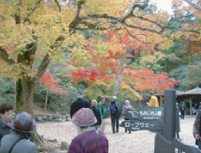 |
|

